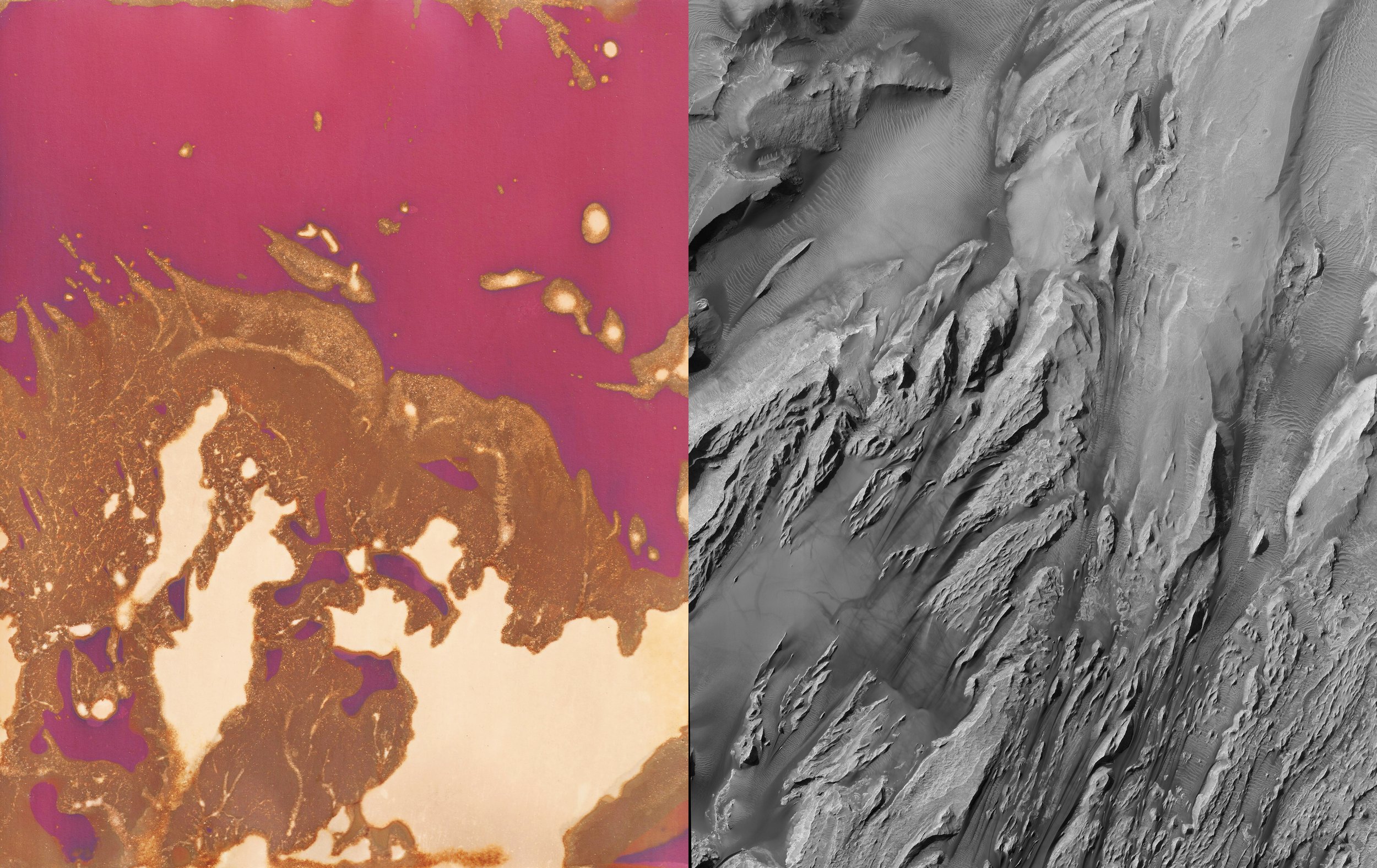Sand deposits and ebbing water on a riverbank, British Columbia, and deposits in Iani Chaos, Mars.
HORIZON
This series compares the Martian landscape with textures of lake beaches, mudflats, and summer grass. Aerial studies are paired with site-specific lumen prints in exploration of similar structural characteristics. Movements of wind and water - vehicles of weathering and seed and nutrient dispersal - are encountered during the lumen exposure process, encompassing the diversity that embroiders the soil mosaic. The Martian imagery was collected by the ongoing HiRISE (High Resolution Imaging Science Experiment) telescope which has been orbiting Mars since 2006 under the direction of the University of Arizona's Lunar and Planetary Laboratory. I selected zoomed-in areas of images within the HiRISE catalogue that showed parallels with Earth’s unique natural compositions.
Our sun velvets the solar system with light. On Earth, light is life potential. Our planet’s numerous processes percolate in the air, crust, water, and sky and hum through our ecosystems, seas, and forests. Earth’s bedrock fragments and disintegrates from weathering processes, forming soil horizons from organic and mineral surface deposits. On Mars, bedrock fragments from the pressures of wind and ice, shaping an early soil layer called regolith. Although Mars lacks the atmospheric and climatic processes needed to further evolve the nascent soil into complex layers like on Earth, it remains highly active, creating ridges, dunes, and troughs through shifting and eroding cycles.
The red dust moves and swirls, freezing and blowing through ancient rivers and lava channels, knitting plains together with endless dunes and ridges and avalanches. Soil, not only synonymous with beginnings and ends, emerges as the liminal space of renewal, dormancy, and transformation.
Sand and tree roots on the shore of Teslin Lake, Yukon, and the linear troughs in Nili Fossae, Mars.
Pebble and sand substrate in Squamish River, British Columbia, and ridges inside a crater in Noachis Terra, Mars.
Shadows of old-growth maple roots growing in a riverbank, British Columbia, and dunes in Roddy Crater, Mars.
Micro braided sand channels and mud deposits on a riverbank, British Columbia, and central dunes in the Herschel Crater, Mars.
Micro braided sand channels and mud deposits on a river bank, British Columbia, and layers in the depression of a crater near Nilosyrtis Mensae, Mars.
Littoral sand deposits in Iona Beach, British Columbia, and ridges on the south pole, Mars.
Black cottonwood roots from Teslin Lake, Yukon, and an ancient dendritic river system flowing into an impact basin, Mars.
Grass seeds and shadows in a wooded wetland, British Columbia, and hydrated sulfate deposits in Valles Marineris, Mars.
Black cottonwood roots from Teslin Lake, Yukon, and geologic layers in the highlands of Nilosyrtis, Mars.









